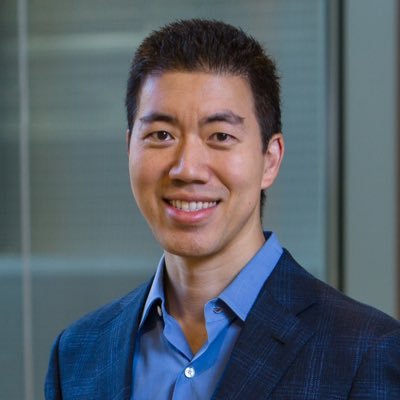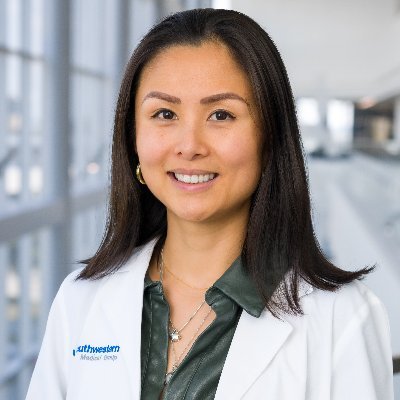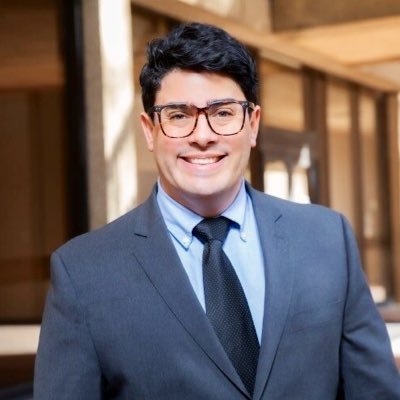
Hao Zhu Lab
@Zhu_Lab
Followers
3K
Following
12K
Media
81
Statuses
3K
Physician-scientist at @CRI_UTSW with a focus on #LiverCancer and organ regeneration.
Dallas, TX
Joined March 2016
Somatic mutations accumulate in “normal” non-cancerous tissues (blood, skin, liver). But why are mutant clones selected? Do they merely proliferate more, selfishly? Or can clones adapt to disease? Could they protect tissues? We shed light on this: https://t.co/Vu1d4U3stc 1/10
37
188
660
Tonight’s episode of @60Minutes will include a segment on the impact of federally funded science and recent cuts to science funding. Our lab’s development of base editing and prime editing and their clinical applications will be among the work described in the episode.
paramountpressexpress.com
Airs 7:00-8:00 PM, ET/ PT on the CBS Television Network and Paramount+ THE FAMILY FARM – American farmers have faced months of uncertainty after China s
30
136
683
Here is HCC 101 video! ~30 min covering imaging, HCC management overview, approach to deciding b/w local therapies. This video was a little longer, so I put in some pics from recent trip to India to keep folks awake 😀. Full video link & slides in replies. 1/8
5
39
138
NUDT5 regulates purine metabolism and thiopurine sensitivity by interacting with PPAT | @ScienceMagazine @CRI_UTSW @UTSWMedCenter @UTSWScience
https://t.co/sRIIN0ncoW
science.org
Cells generate purine nucleotides through de novo purine biosynthesis (DNPB) and purine salvage. Purine salvage represses DNPB to prevent excessive purine nucleotide synthesis through mechanisms that...
1
2
4
Zones & Patterns of Liver Injury Zone 1 (ALT > AST) ▪️Autoimmune hepatitis ▪️Viral hepatitis Zone 3 (AST > ALT + ⬆️ LDH) ▪️Ischemia ▪️Toxic events ▪️Heart failure ▪️Budd-Chiari syndrome Note: ALP is predominant in basolateral membrane #LiverTwitter 👊
12
504
2K
Residual central veins within regenerative nodules are a hallmark of zone 3–based injury in steatohepatitis-related cirrhosis—reflecting fibrosis that begins around central veins and bridges outward. 🔬Supportive, but not diagnostic, of this etiology. #LiverPath
2
11
40
Our framework for navigating local therapy options in HCC. With @riadsalemIR. Table below & details in #ASCODailyNews article. Recs take into account global practice patterns, tech availability, guidelines, etc. Always open to feedback🙂. https://t.co/nqjmhQ4nZR
@OncoAlert
2
28
67
Congratulations to all the awardees - but especially my husband Joshua Mendell on this well-deserved recognition. VERY proud!!🎉
Congratulations and welcome to the 100 new members elected today to the National Academy of Medicine! #NAMmtg
0
2
12
ONLINE NOW in @ScienceMagazine: Zhu Lab discovers location matters for liver cancer's origins. Read more ➡️ https://t.co/0wB41Dr3GR 🔖 @Zhu_Lab breakdown ⬇️ #relentlessdiscovery @ScienceNews
cri.utsw.edu
Hepatocellular carcinoma arises primarily in zone 3 due to glutathione transferase genes that help mutated cells avoid dying Scientists have discovered liver cancers arise in specific metabolic...
Where do cancers start? In the liver, not all cells are the same. The liver is divided into 3 “zones,” and each specializes in different metabolic tasks. We show in @Science that where a mutation occurs in a liver lobule can determine a cell’s fate. https://t.co/3YTc77gZcd (1/9)
0
2
20
Congratulations to this year’s recipients of the Memorial Sloan Kettering Cancer Center (MSK) 2025 Paul Marks Prize for Cancer Research: Dr. @AbdelWahablab, of @MSKCancerCenter; Dr. Andrea Ablasser, of @EPFL_en; and Dr. @cncurtis, of @StanfordMed. The prize, named in honor of
10
10
79
Two new Nature papers show that inhibiting FSP1 is sufficient to restrict tumor growth in vivo, a major step forward for ferroptosis-targeted cancer therapy. Huge congrats to all authors! https://t.co/ezDfPzSqvK
https://t.co/uaYWXKoi87
#Ferroptosis #FSP1 #CancerResearch
nature.com
Nature - The ferroptosis suppressor protein FSP1 has a critical role in ferroptosis protection of tumours across multiple in vivo models and is linked to worse prognosis in human lung...
2
46
174
Zonation isn’t just about liver function and spatial division of labor. It can fundamentally shape where cancer begins by providing a ferroptosis-protected locale for tumor transformation. Congrats to @RogerLiang9 @ASJChung @ZJL1435957 @SChung_Lab @TaoWang27112003 (9/9)
0
0
6
Using this knowledge of zonation, we found that ethacrynic acid, a loop diuretic with strong GST inhibitory activity, could prevent tumor formation in mouse models. Understanding the "where" of cancer may reveal new ways to stop it before it starts! (8/9)
1
0
9
Digging deeper, we found that GSTM2/3 suppress ferroptosis, which is a form of cell death triggered by lipid oxidation. Inhibiting GSTMs increased oxidative stress and sensitized cell death in different HCC models after RSL3-induced ferroptosis. (7/9)
1
0
4
We tested chemical, siRNA, and whole-body deletion of these GSTs, which all led to less tumors. On the flip side, overexpression led to an increase in cancer burden. Remarkably, zone 1-specific Gstm3 overexpression actually shifted tumor origins from zone 3 to zone 1. (6/9)
1
0
4
So how did clones in zone 3 preferentially end up developing into cancer? Using a one-by-one CRISPR knockout screen with hydrodynamic transfection, we looked for zone-specific factors that let clones transform. Two zone-3 enriched proteins, GSTM2 and GSTM3, stood out. (5/9)
1
0
3
Completely against our expectations, we observed that cancers more likely arose from zone 3, not zone 1. Transcriptomic analysis of tumors from both zones showed that they were similar and did not segregate by zone of origin. (4/9)
1
0
5
We followed these mutant clones via orthogonal approaches – ectopic GS expression, single cell DNA genotyping, and spatial transcriptomics. Those in zone 1 persisted for months while those in zone 3 mostly disappeared, in part due to differences in proliferation. (3/9)
1
0
4
Most liver genes are zonally patterned. Chronic injury gives many hepatocytes mutations, but only a tiny fraction progress to cancer. Using zone-specific CreER strains, we introduced two common mutations found in HCC (CTNNB1 and ARID2) into specific zones. (2/9)
1
0
7
Where do cancers start? In the liver, not all cells are the same. The liver is divided into 3 “zones,” and each specializes in different metabolic tasks. We show in @Science that where a mutation occurs in a liver lobule can determine a cell’s fate. https://t.co/3YTc77gZcd (1/9)
22
131
487
A bird's eye view of the human genetics of non-alcoholic fatty liver disease (NAFLD) showing genes linked to NAFLD via common and rare germline variants and somatic mutations, from a recent review by Mancina, Valenti & Romeo. Nat Metab 2025 ( https://t.co/pXCQwvMs2J) One thing
1
17
67















